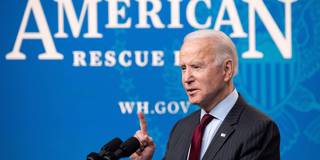There were three seemingly strong reasons to predict last year that the US economy was headed for a double-dip recession. In the end, a confluence of three other reasons explains why that prediction turned out to be spectacularly wrong.
NEW HAVEN – I have been in the economic forecasting business for close to 50 years. I got my start in the early 1970s, on the research staff at the Federal Reserve in Washington, DC, before taking my crystal ball to Wall Street for over 30 years. For more than a decade, it has been the ivory tower at Yale – still dabbling in forecasting from time to time but mainly teaching, writing, and speaking.
Over that long stretch, my forecasting record has been mixed. There were a couple of memorable calls at the Fed, where I warned of a sharp recession in the mid-1970s and intractable inflation later in the decade. But I look back with the greatest pride on my collaboration with Larry Slifman in building the Fed’s first “black box” forecasting model that I believe is still largely in use today. We worked around the clock for several weeks to program linked computer-based spreadsheets (unheard of back then) as a replacement for the single-iteration monthly exercise previously done manually on a Monroe calculator. Our so-called judgmental approach was the point-counterpoint to the Fed’s renowned large-scale econometric model.
My Wall Street efforts were more thematic. I continued to forecast but focused more on big-picture developments such as corporate debt and restructuring in the late 1980s, the productivity debate of the 1990s, global healing of a post-crisis world in the early 2000s, and then my sweet spot, China and its impact on the global economy. My Wall Street forecasting record was good enough to maintain job security at Morgan Stanley, although there were several close calls.

NEW HAVEN – I have been in the economic forecasting business for close to 50 years. I got my start in the early 1970s, on the research staff at the Federal Reserve in Washington, DC, before taking my crystal ball to Wall Street for over 30 years. For more than a decade, it has been the ivory tower at Yale – still dabbling in forecasting from time to time but mainly teaching, writing, and speaking.
Over that long stretch, my forecasting record has been mixed. There were a couple of memorable calls at the Fed, where I warned of a sharp recession in the mid-1970s and intractable inflation later in the decade. But I look back with the greatest pride on my collaboration with Larry Slifman in building the Fed’s first “black box” forecasting model that I believe is still largely in use today. We worked around the clock for several weeks to program linked computer-based spreadsheets (unheard of back then) as a replacement for the single-iteration monthly exercise previously done manually on a Monroe calculator. Our so-called judgmental approach was the point-counterpoint to the Fed’s renowned large-scale econometric model.
My Wall Street efforts were more thematic. I continued to forecast but focused more on big-picture developments such as corporate debt and restructuring in the late 1980s, the productivity debate of the 1990s, global healing of a post-crisis world in the early 2000s, and then my sweet spot, China and its impact on the global economy. My Wall Street forecasting record was good enough to maintain job security at Morgan Stanley, although there were several close calls.